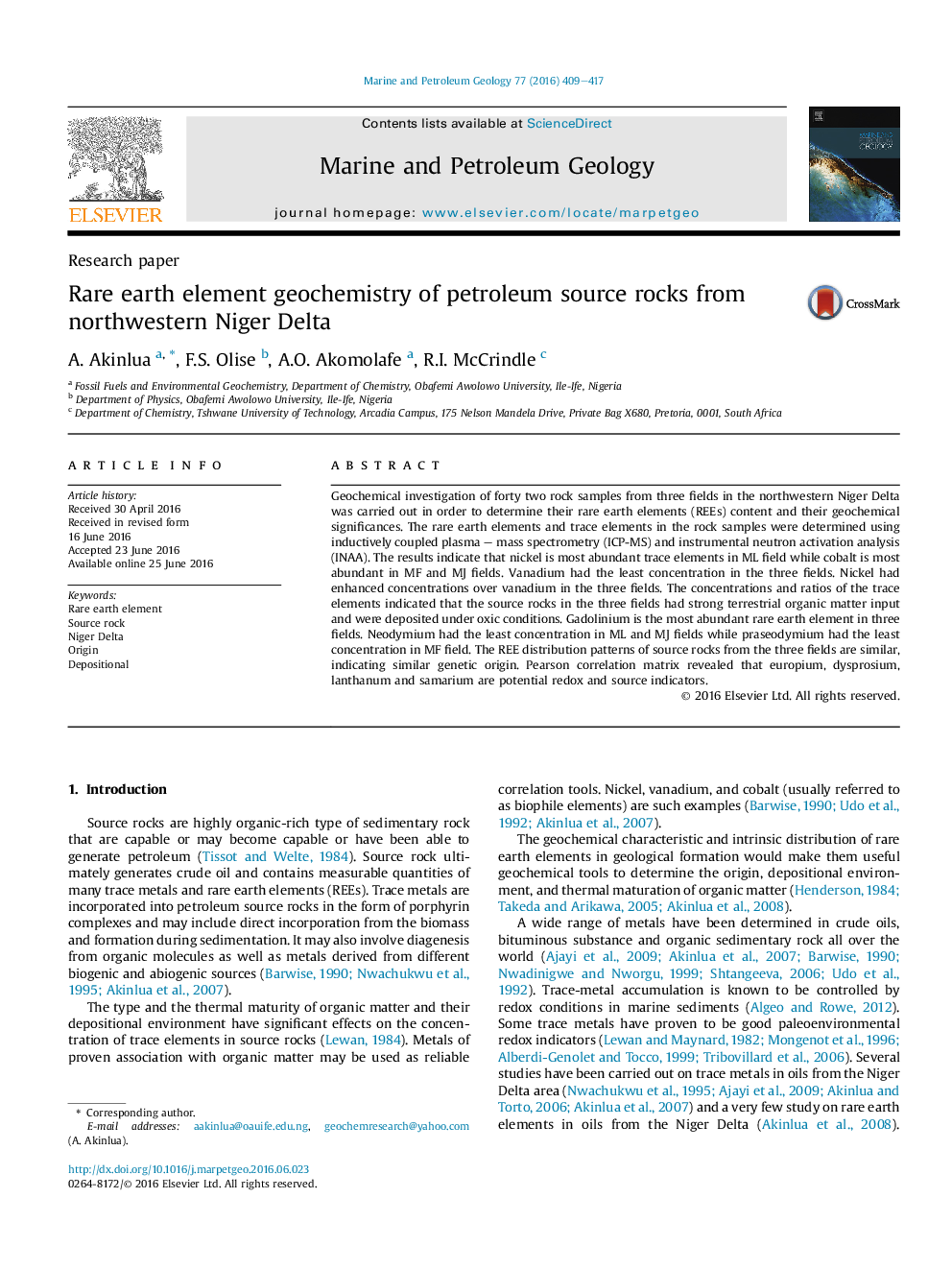| Article ID | Journal | Published Year | Pages | File Type |
|---|---|---|---|---|
| 6434560 | Marine and Petroleum Geology | 2016 | 9 Pages |
â¢Nickel is most abundant biophile element in northwestern Niger Delta source rock.â¢Trace element data indicated that the source rocks had terrestrial organic matter input.â¢Gd is the most abundant REE in the northwestern Niger Delta source rocks.â¢The REE distribution patterns of the source rocks are similar, indicating similar genetic origin.â¢Eu, Dy, La and Sm are potential redox and source indicators.
Geochemical investigation of forty two rock samples from three fields in the northwestern Niger Delta was carried out in order to determine their rare earth elements (REEs) content and their geochemical significances. The rare earth elements and trace elements in the rock samples were determined using inductively coupled plasma - mass spectrometry (ICP-MS) and instrumental neutron activation analysis (INAA). The results indicate that nickel is most abundant trace elements in ML field while cobalt is most abundant in MF and MJ fields. Vanadium had the least concentration in the three fields. Nickel had enhanced concentrations over vanadium in the three fields. The concentrations and ratios of the trace elements indicated that the source rocks in the three fields had strong terrestrial organic matter input and were deposited under oxic conditions. Gadolinium is the most abundant rare earth element in three fields. Neodymium had the least concentration in ML and MJ fields while praseodymium had the least concentration in MF field. The REE distribution patterns of source rocks from the three fields are similar, indicating similar genetic origin. Pearson correlation matrix revealed that europium, dysprosium, lanthanum and samarium are potential redox and source indicators.
